

Anthony Crawford
1990 Lamborghini Countach review
5 Days Ago
Quickly see how this car stacks up against its competition. Select any benchmark to see more details.
Where expert car reviews meet expert car buying – CarExpert gives you trusted advice, personalised service and real savings on your next new car.
Recent lottery win? Death of an otherwise heir-free millionaire relative? Successful large-scale fraud that hasn’t been detected yet? Meet the car that should be right at the top of your list.
The Ferrari SF90 Stradale is exceptional for several reasons, but the most important of these is, paradoxically, that Ferrari isn’t going to market it as one of its unobtanium ‘special’ models.
If it had done that, as it did with the LaFerrari that used to sit at the top of the tree, only those who had proved their loyalty to the brand over many years by buying many cars would have had a chance of winning one.
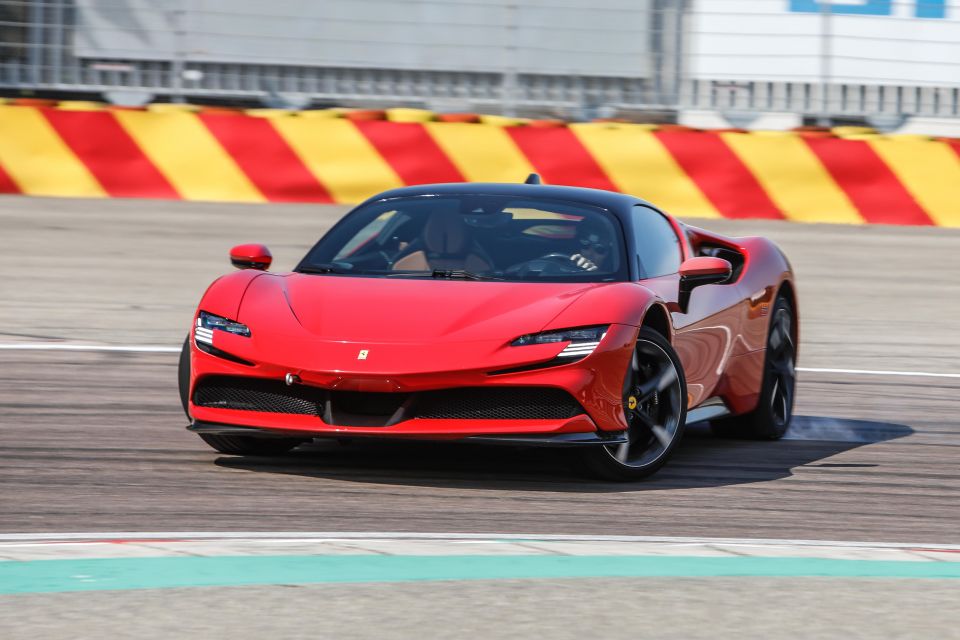

But despite being quicker than its seminal predecessor, the SF90 Stradale is a regular production Ferrari.
Meaning that if you can raise the asking and persuade a dealer to take your order – or put you at the end of a sizeable list – then you can have one. As the pinnacle car from the world’s most desirable brand, that makes it something close to a must-have.
The SF90 also boasts a level of technical innovation that sweeps the competition off the map. Other supercar makers are working on future hybrid powertrains which will have one or two electric motors.
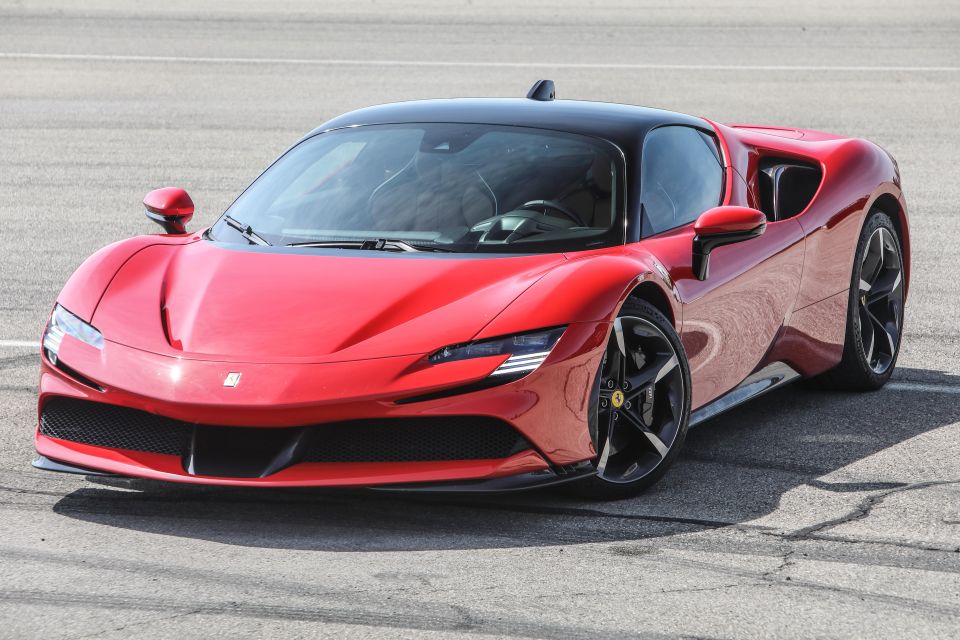
The SF90 is here with three, one for each front wheel and another sandwiched between its twin-turbocharged V8 and double-clutch gearbox at the back. These can work together to increase performance, but they can also radically alter the car’s dynamic behaviour – and make it ridiculously easy to make use of its monstrous output.
The SF90 Stradale is priced from $846,888 before options and on-road coasts, meaning about $1.1m drive-away.
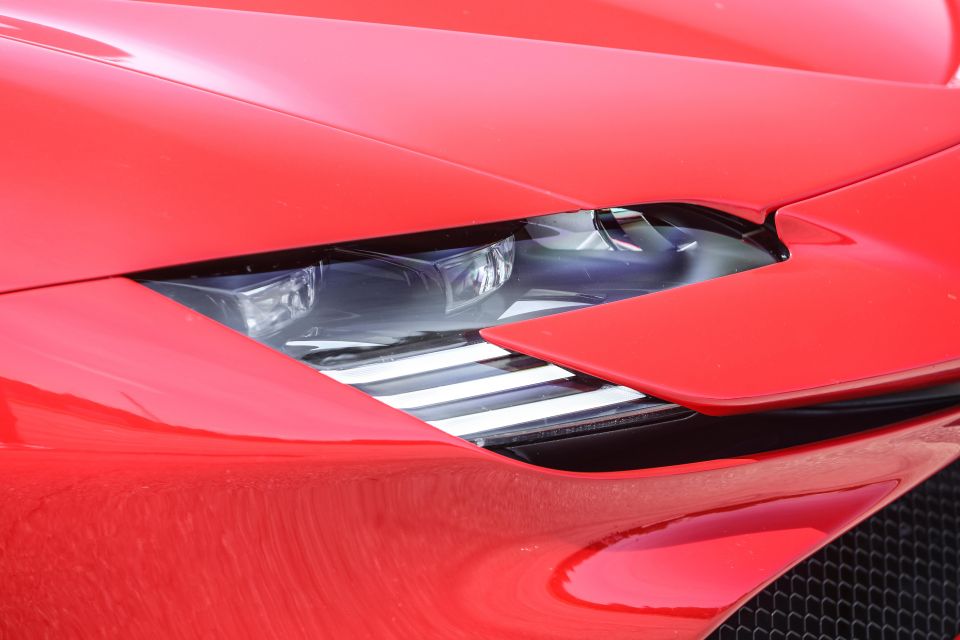
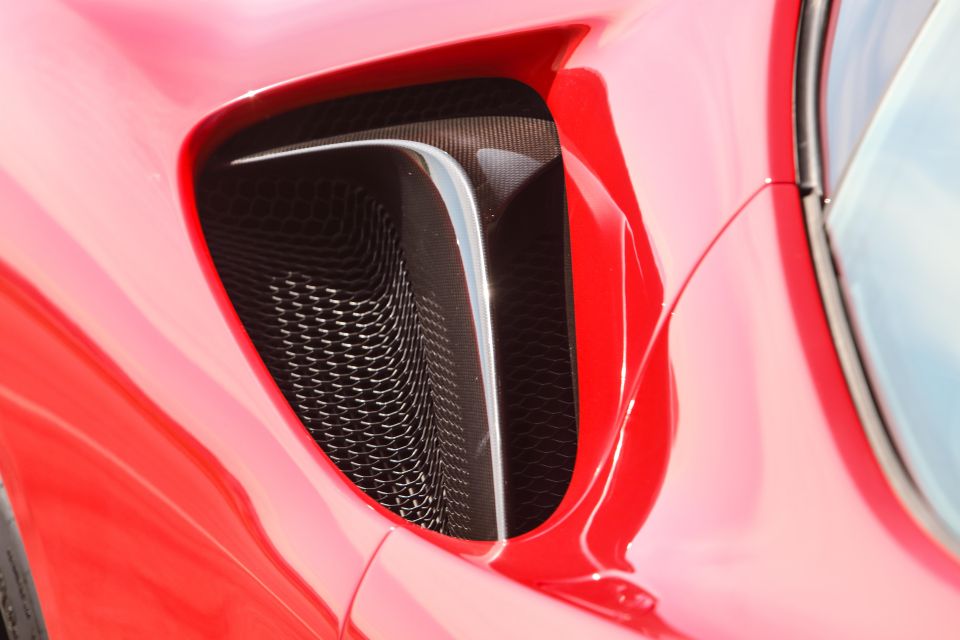
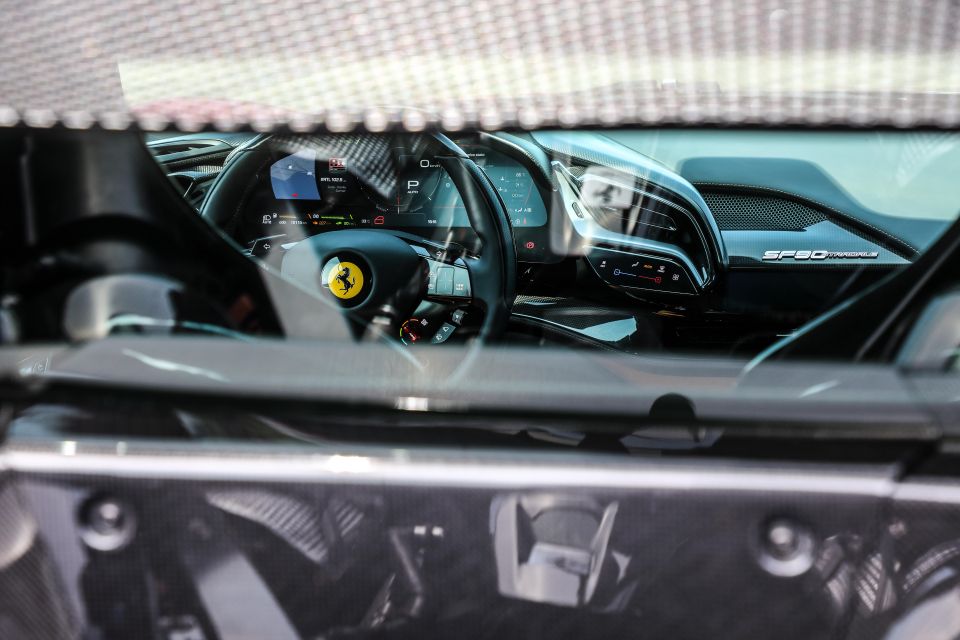
For prospective buyers the biggest issue is likely to be getting their names accepted against an order slot, with the first-year allocation for Australia reportedly sold out as soon as the car was announced.
The days when you used to buy a Ferrari to find a blanking plate where the audio system would go are long behind us, and the SF90 Stradale’s standard spec includes the full battery of dynamic systems and a fair amount of kit. Don’t worry, though – there are still plenty of opportunities to spend extra, and most buyers will do so.
The big debate for buyers is whether to get the Fiorano Performance Pack. This brings motorsport derived dampers, extra lightweight panels and titanium springs, and although it only takes 0.3 seconds off the SF90’s lap time around the track it is named after, many will reckon the $111,306 price tag is worth it for the “best” version.
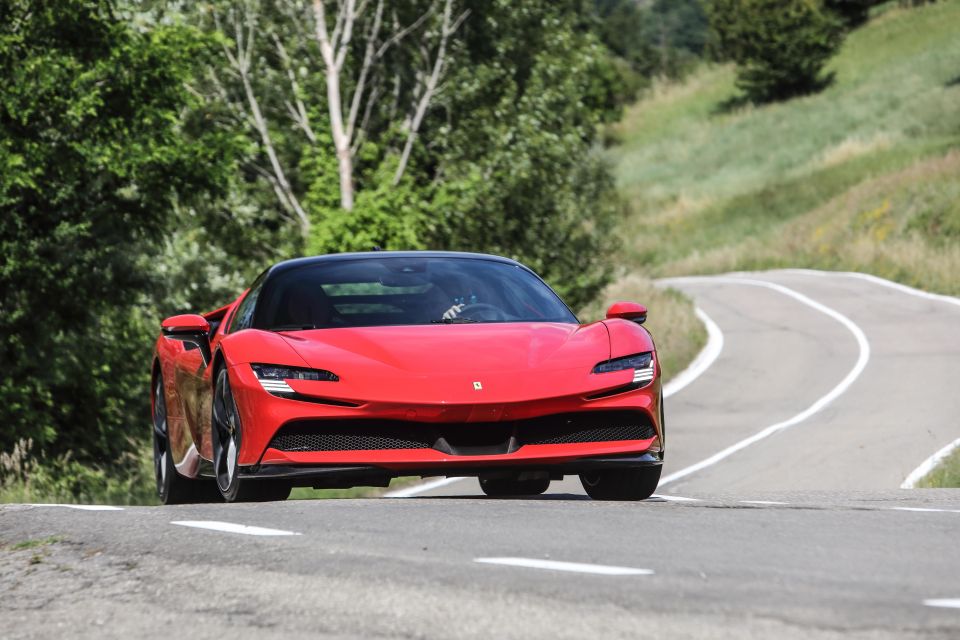


It also brings to right to spend more on a set of factory stripes.
Extra cost cosmetic enhancements include additional carbon fibre trim and, of course, the “Scuderia Ferrari” shields on the front wings that many will regard as a must-tick.
Similarly I suspect that most buyers will opt for factory fit anti-chip helicopter tape, the front lifter, rear parking camera and front parking sensors and the upgraded audio system.
Ferrari doesn’t submit its cars to NCAP testing so it seems unlikely the SF90 will ever earn a star rating.
Yet while it’s not hard to imagine circumstances where the performance of a 735kW Ferrari will outrun the talents of those trying to drive it, the car itself features a hugely strong structure with both aluminium and a carbon fibre rear bulkhead that will look after you about as well as anything in an impact.
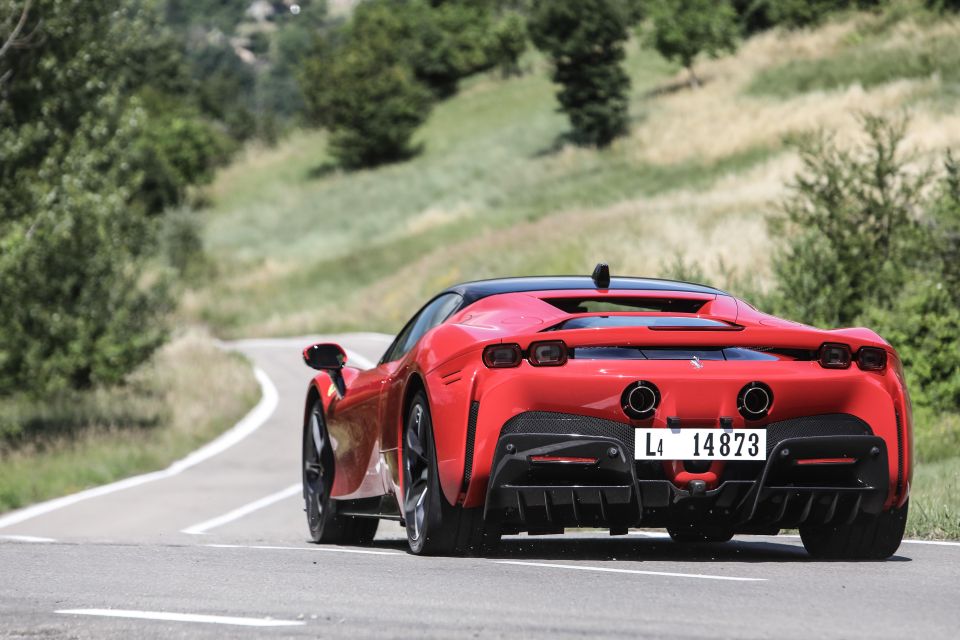
But if you’re looking for the latest active systems then you’ll need to look elsewhere – the Ferrari doesn’t get lane-keep, blind spot monitoring or AEB.
Ferrari has kicked its game up with the SF90, with a substantial upgrade over the cabin of the lesser F8 Tributo. That comes in terms of nicer materials in most places, but also a major ergonomic makeover.
It’s the first car to get Ferrari’s new Human Machine Interface, this using touch-sensitive panels in place of almost all conventional switchgear, both on the face of the steering wheel, but even to control functions like lights and ventilation.
For the most part, this works impressively well. A 16-inch digital screen ahead of the driver acts as both dashboard and display screen, and can be switched between different modes – allowing you to maximise the navigation map, for example.
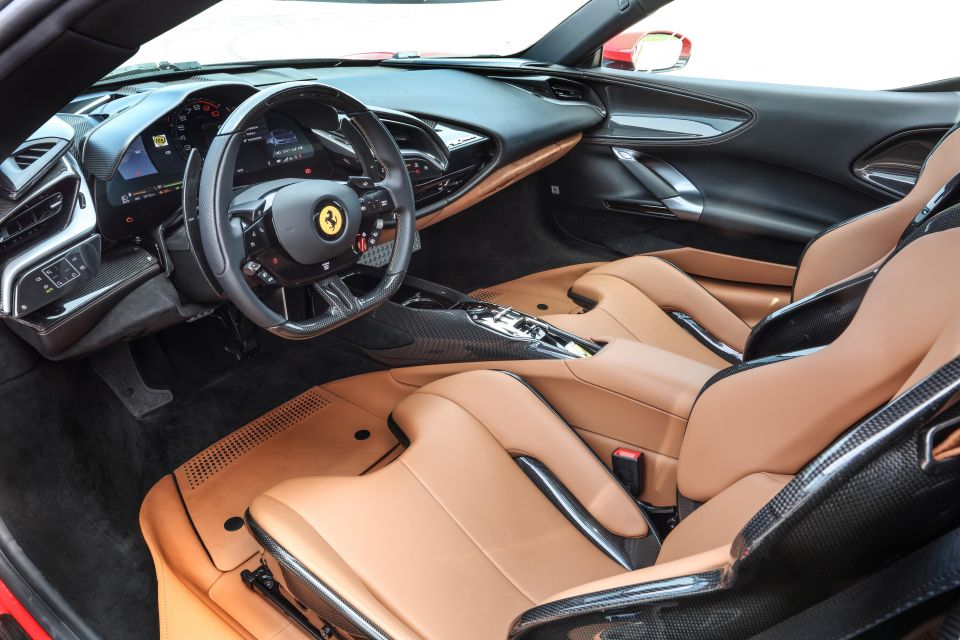
You can swipe between other information screens, with the SF’s speakers playing a page turning noise when you do so (it may well be possible to turn this off, but it is kind of endearing.)
As with all recent Ferraris, the SF90 doesn’t get conventional indicator or wiper stalks, with the controls instead integrated into the face of the steering wheel. This also controls the familiar turnable ‘Manettino’ controller, which switches between Wet, Sport, Race, Traction Off and Stability Off modes.
On the other side is a touch sensitive panel for what’s been dubbed e-Manettino, controlling the powertrain modes: e-Drive, Hybrid, Performance and Qualify, the last of which prioritises all-out performance over keeping the battery fully charged.
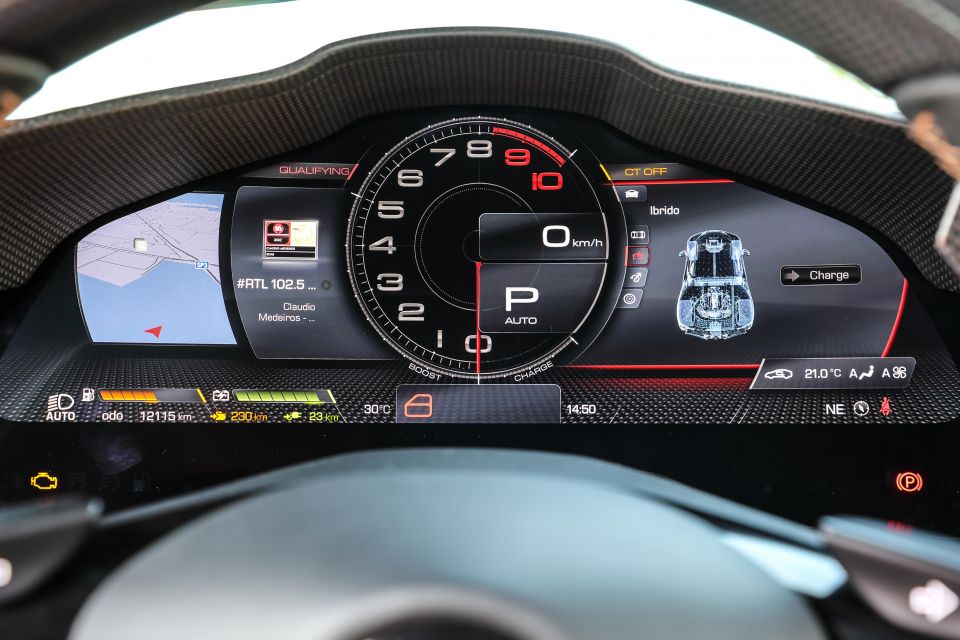
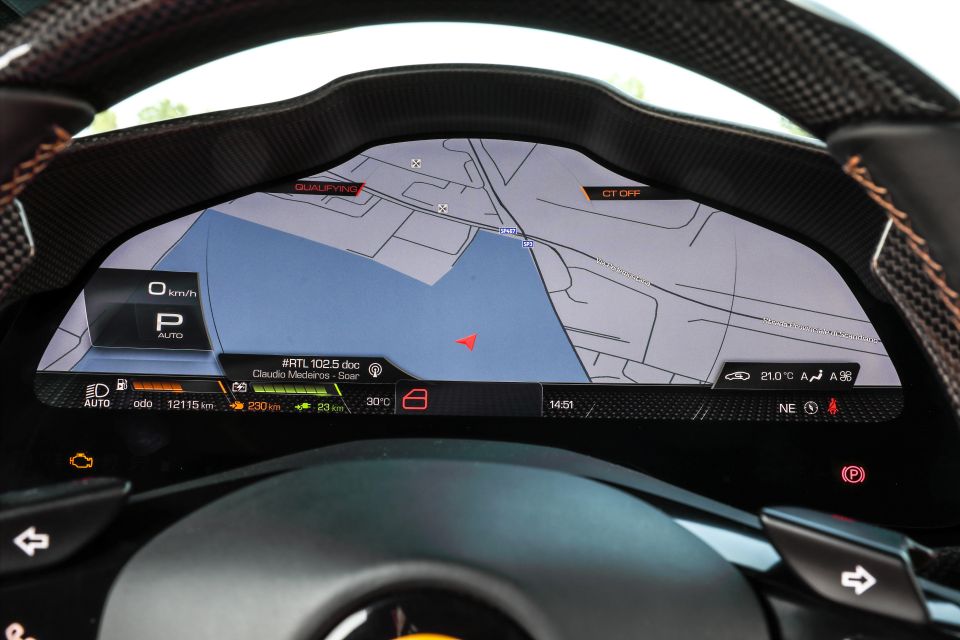
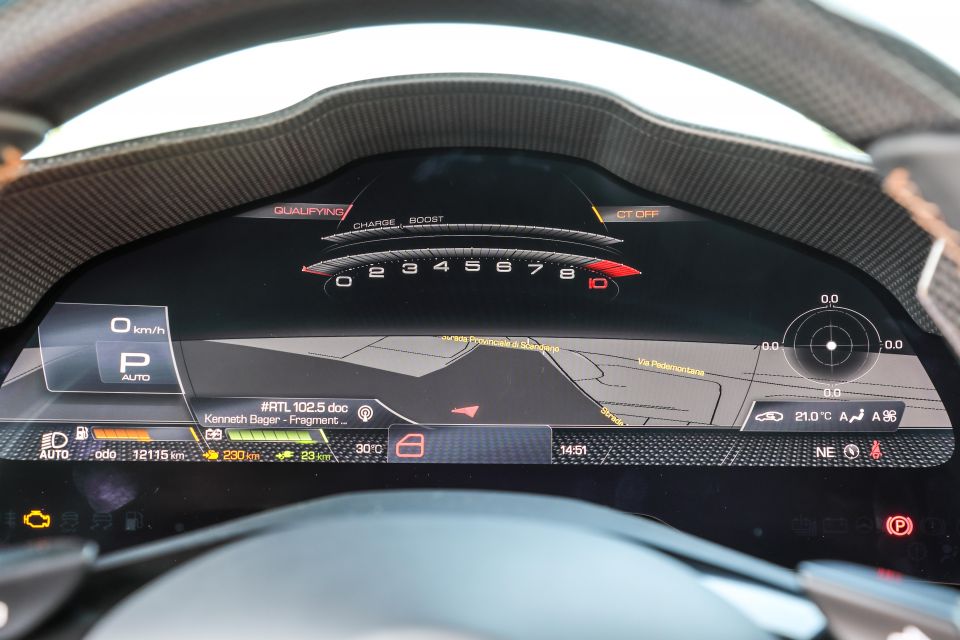
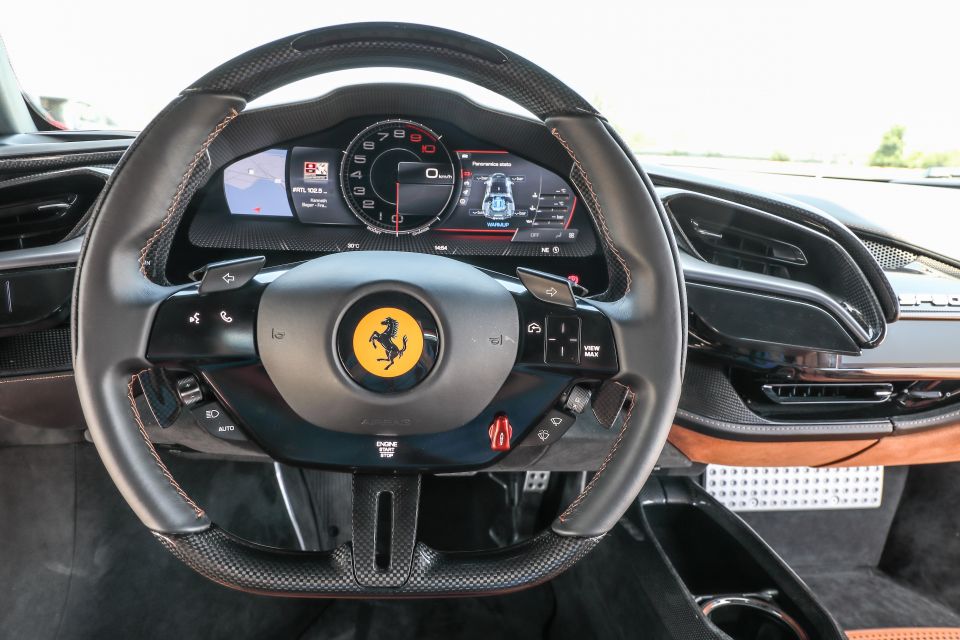

The seating position is predictably low, and the grip of the optional sports seat in the car we drove in Italy predictably huggy; it is possible to specify different ‘fits’ of the seat for different sizes, or more comfortable comfort seats.
Plenty of V8 noise gets into the cabin under hard use, but it is also impressively well isolated at cruising speeds. Which, in the SF90, are unsurprisingly high.
Two grumbles: the shape of the dashboard throws too much reflection up in the windscreen in bright sunlight, and the fan for the ventilation system is loud and had to work very hard to keep cabin temperatures under control in low-30s ambient.
In this case, bonnets. Pop the front hood and at the back of the small-but-acceptable luggage space is a glass cover that, for anyone of the right generation, instantly brings the Flux Capacitor of the Back to the Future Delorean to mind.
Beneath this is an aluminium housing for what Ferrari describes as the RAC-e mechanism, the shared gearbox for both front motors, although each drives just one wheel.
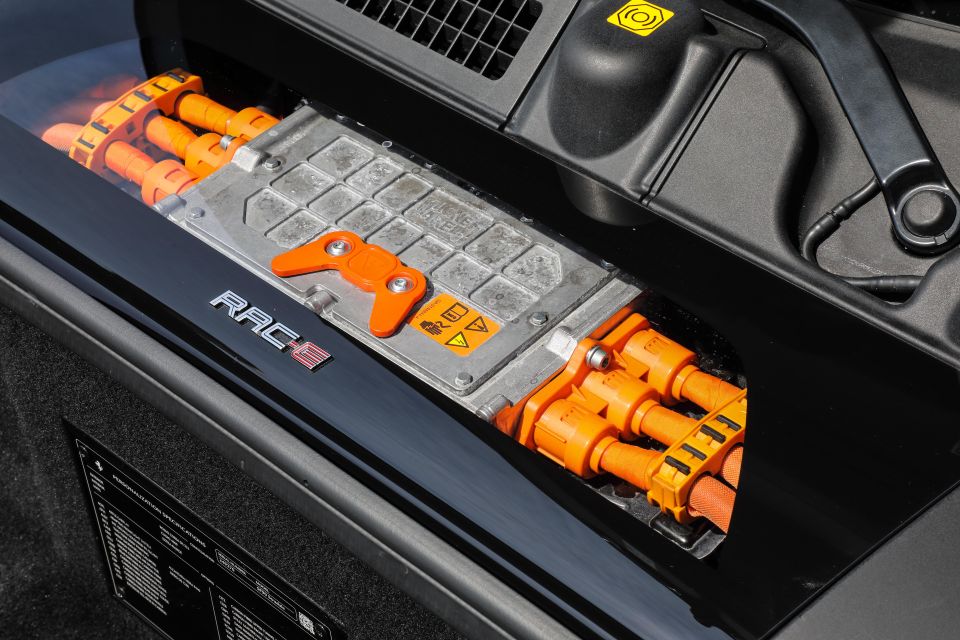
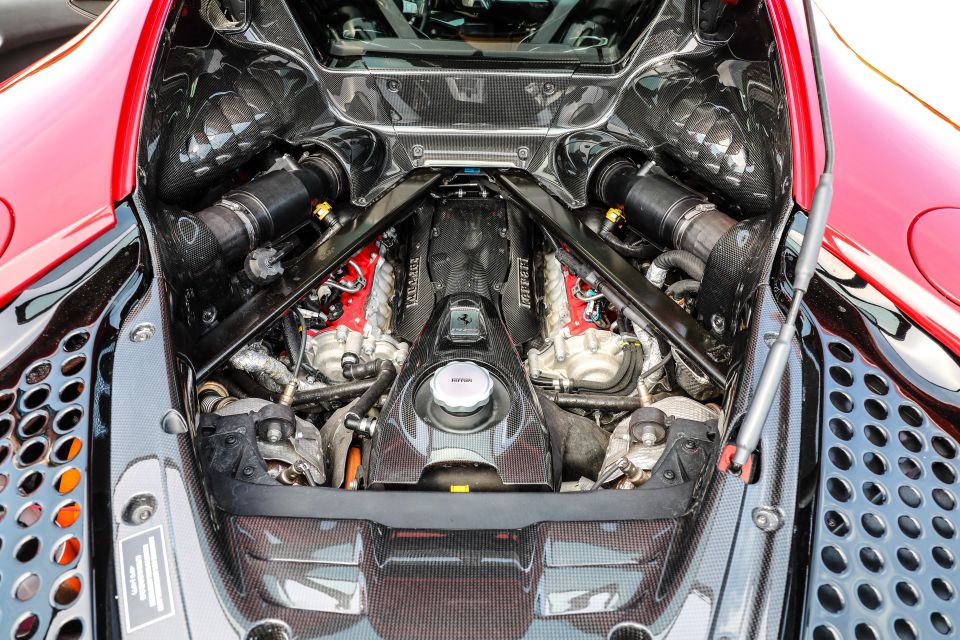
At the rear there’s the familiar glass engine cover, with a reworked version of the V8 fitted to the F8 Tributo sitting far below it. This has a redesigned cylinder head, new turbos and higher injection pressures which take its output to 574kW, and it’s 25kg lighter too.
It drives the rear wheels through an eight-speed twin-clutch gearbox, with the final electric motor, a state of the art “axial flux” unit, sandwiched between engine and transmission.
The electric motors an add up to 162kW, with that number limited by the maximum rate of current flow the 8kWh battery pack can support rather than the hardware itself. Meaning that when the front electric motors disengage at speeds above 210km/h the rear one is capable of taking the entire peak flow, so total output remains the same.
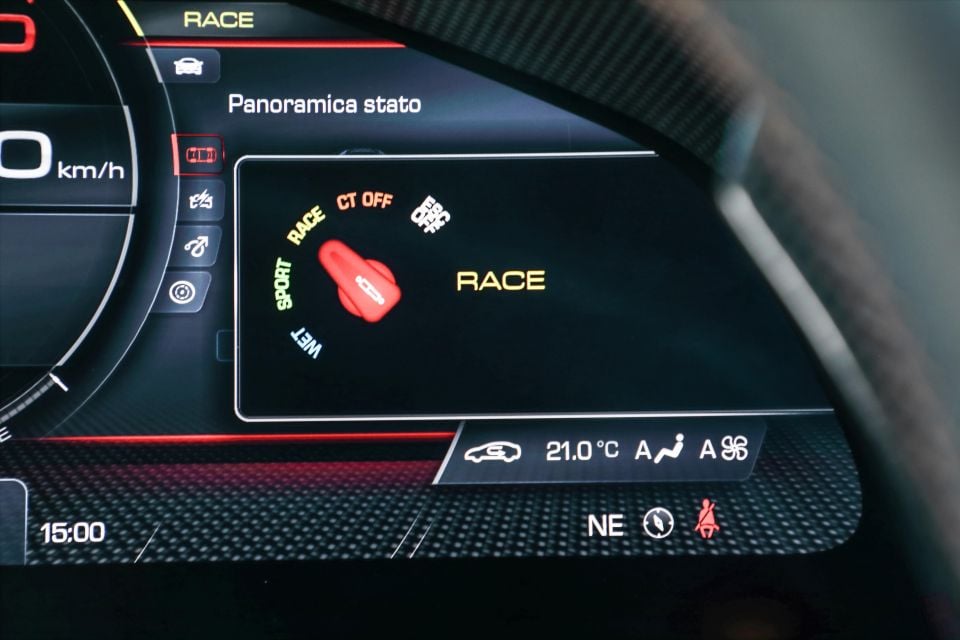
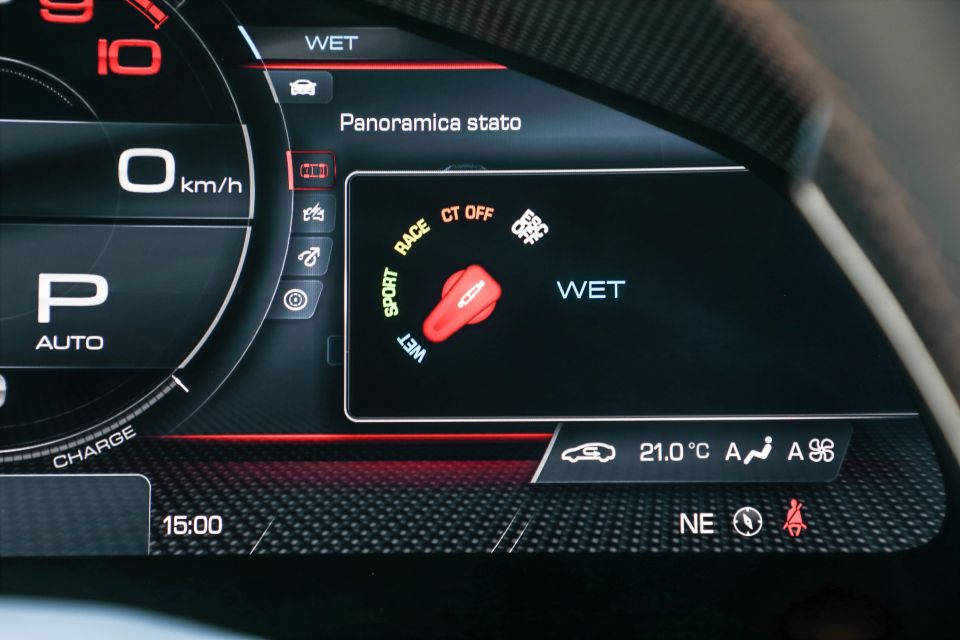

The SF90 is enough of a plug-in to support pure electric operation in both the eMode and blended Hybrid setting. This isn’t very rapid – subjectively about first-generation Nissan Leaf – and is delivered exclusively through the front electric motors.
That’s right, a front-drive Ferrari EV: not what Enzo was thinking of when he said “I make engines and fit wheels to them.” Ferrari claims up to 25km of range, with electric operation available at speeds of up to 135km/h
It’s hard not to get too frothy here, because the SF90 really does feel like a reset moment for its rarefied part of the market. There have been hugely fast Ferraris before, of course, but none have been as easy to drive as the Stradale is, as capable of both delivering performance and flattery in almost equal measure.
It’s superbike fast. On road just getting the SF90’s throttle to its stop feels like a genuine achievement, and one that you’ll only manage for at most seconds at a time. This is a car that can blast its way from rest to 100km/h in just 2.5 seconds, and which takes just 6.7-seconds to reach 200km/h from a standstill.
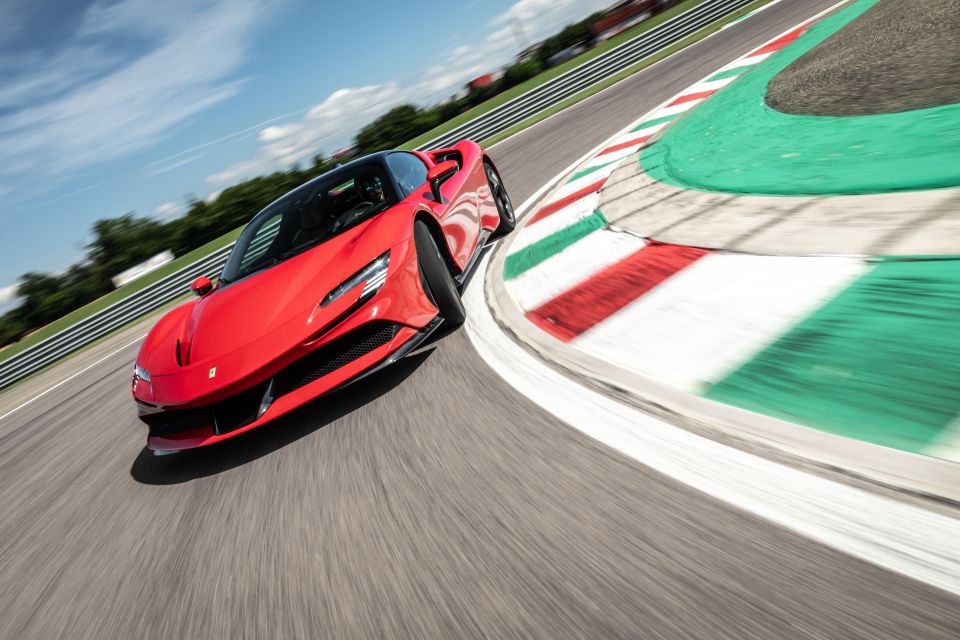
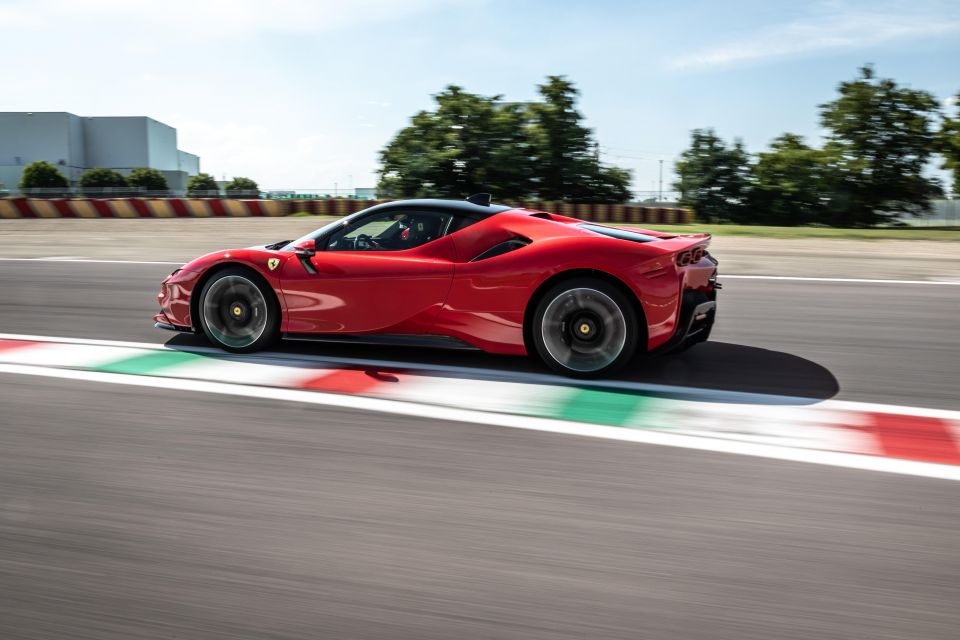
For the record, that’s a tenth faster than the stripped-out McLaren Senna. You can drive the Ferrari using little more than half throttle, and changing up well short of the 8000rpm redline, and it still feels supercar fast.
The clever all-wheel drive system finds huge traction for all this urge. On road there is rarely any sensation of the electrical side of the powertrain helping out, assistance is almost invisible.
But it’s there, with the front electric motors capable of torque vectoring to sharpen responses, and regenerative braking working as an ultra-fast form of traction control to prevent wheel slip.
Ride quality is remarkably compliant as well, with a route that featured many of the twisty, bumpy roads in the hills above Ferrari’s Modena HQ dispatched with much less drama than I can remember from practically anything else, and with none of the sounds of carbon grating on tarmac normal from a supercar on a rough surface.
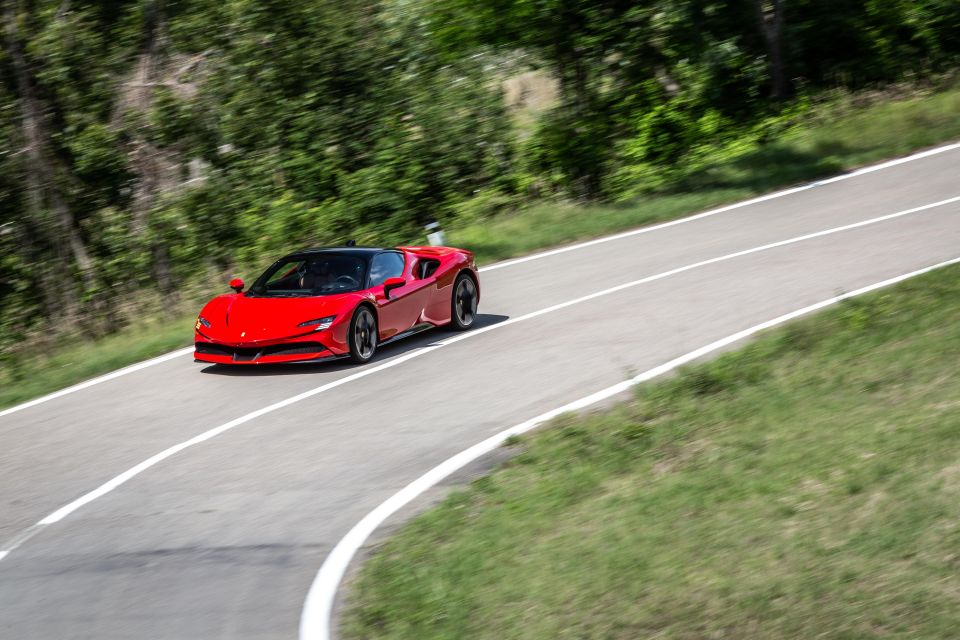
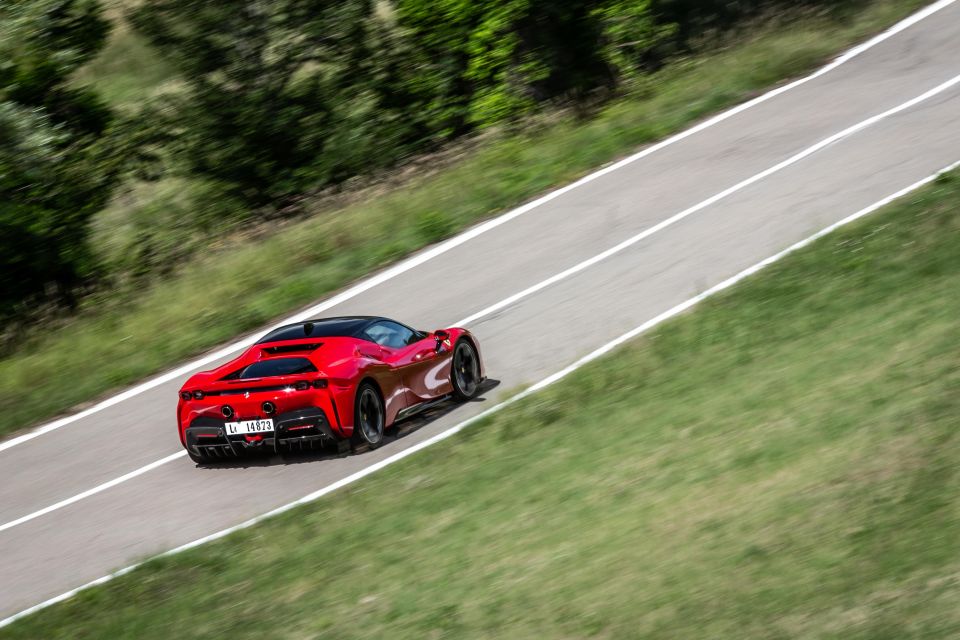
A chance to drive at Ferrari’s Fiorano test track revealed circuit acceleration feels even more impressive than it does on road, the SF90 shortening straights and delivering organ-crushing G-forces, the engine both snarling and singing under hard use. But it stays friendly, finding apexes at what feel like impossible speeds and delivering huge traction on the way out of corners.
It has a playful side, too – happy to slide its way around tighter turns with the traction control switched off, the front axle working overtime to keep yaw angles manageable.
By hypercar standards the SF90 should be relatively inexpensive to keep on the road, thanks to Ferrari’s offer of inclusive servicing and the fact it seems likely to hold onto value better than any obvious alternative.
The company hadn’t finalised economy or emissions numbers when we drove the car, but the sizeable amount of electric power means that, if driven in its hybrid mode and recharged from the mains, it should be light on the fuel as well. Not that many owners will, of course.
I came away from my first drive in the SF90 Stradale with the overwhelming impression that Ferrari didn’t need to try so hard. The company could have used a less potent – or certainly less clever – hybrid powertrain and still been well ahead of the pack.
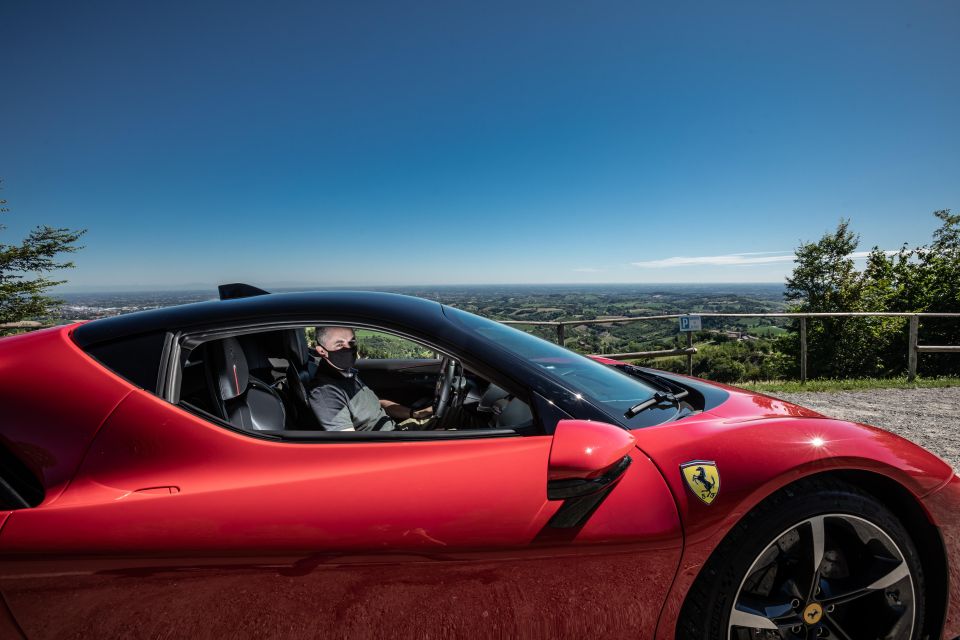
Alternatively it could have almost certainly charged a fair chunk more and still been confident of selling every car – in most markets where both were sold, the SF90 is around half the price of the once-definitive LaFerrari.
This is an emotion-heavy part of the market where many will feel more attraction to alternatives, especially given the SF’s slightly bland frontal styling. But from a rational point of view – not normally a word associated with a brand as passionate as Ferrari – this is undoubtedly the best hypercar in the world at present.
Where expert car reviews meet expert car buying – CarExpert gives you trusted advice, personalised service and real savings on your next new car.


Anthony Crawford
5 Days Ago


Matt Campbell
4 Days Ago


James Wong
3 Days Ago


Max Davies
2 Days Ago


Josh Nevett
16 Hours Ago
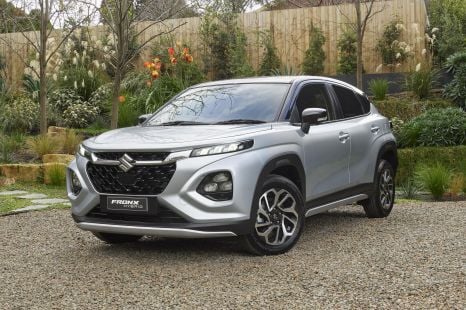

William Stopford
13 Hours Ago